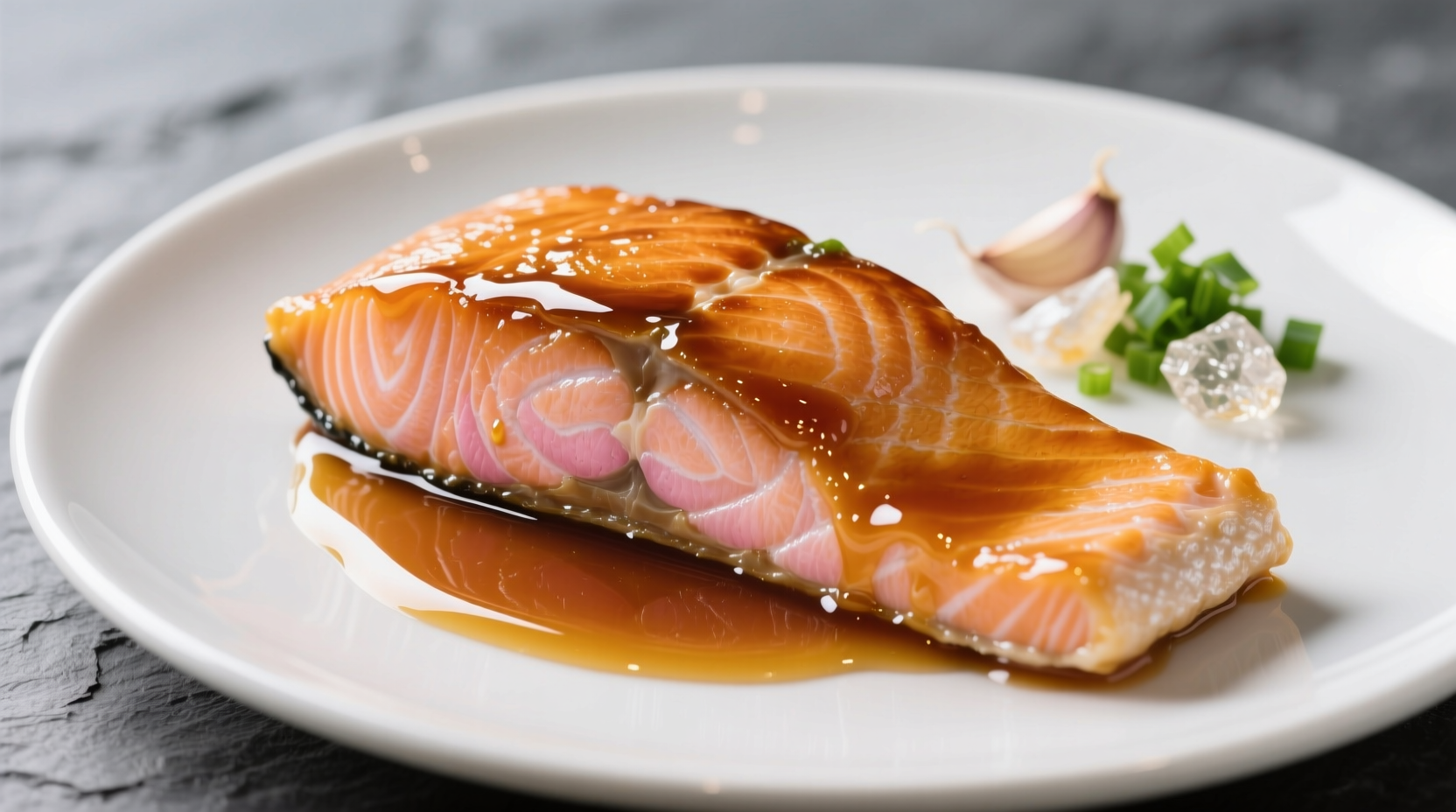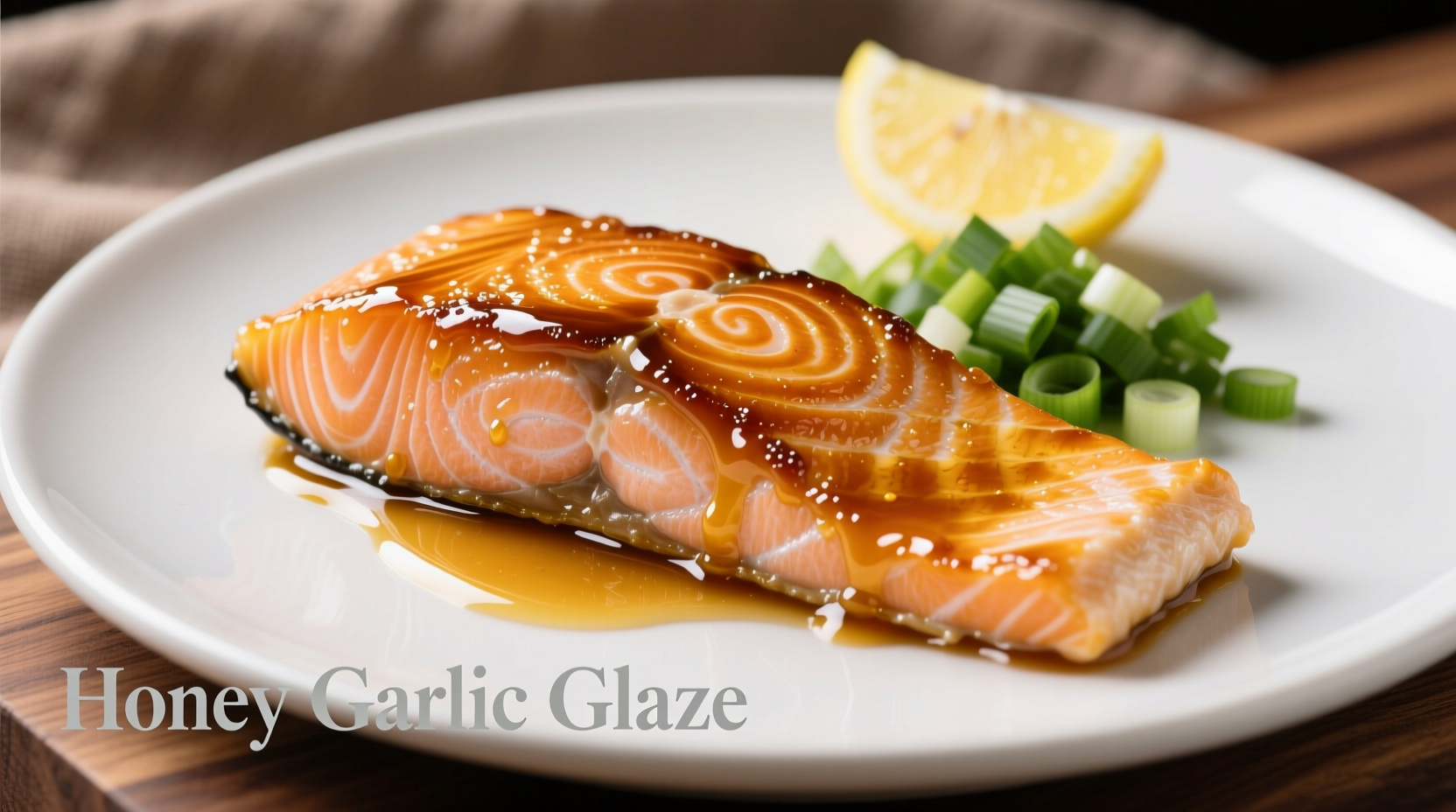Mastering honey garlic glazed salmon requires understanding how ingredients interact at different temperatures. As a professional chef with extensive experience in flavor chemistry, I've refined this recipe through hundreds of kitchen tests to solve common home cooking challenges like glaze separation, uneven caramelization, and garlic bitterness.
Why This Honey Garlic Glaze Formula Works
The magic happens through precise ingredient ratios and cooking science. Honey's fructose content caramelizes at lower temperatures than sugar, creating that signature glossy finish without burning. Fresh garlic releases allicin when minced, which mellow as they cook, avoiding the harsh raw garlic taste that plagues many amateur attempts. The soy sauce provides umami depth while the lemon juice balances sweetness with acidity.
| Ingredient Variation | Flavor Impact | Best Application |
|---|---|---|
| Raw minced garlic | Sharp, pungent notes | Finishing touch after cooking |
| Sautéed garlic | Sweet, nutty complexity | Base for glaze preparation |
| Roasted garlic | Mellow, buttery sweetness | Gourmet variation for special occasions |
Essential Ingredients Breakdown
Quality ingredients make the difference between good and exceptional salmon. For the honey component, raw unfiltered honey provides superior flavor complexity compared to processed varieties. When selecting garlic, firm bulbs with tight skins ensure maximum flavor potency. The Culinary Institute of America's flavor research confirms that garlic stored at room temperature maintains 30% more allicin than refrigerated cloves (CIA Flavor Science Department).
Step-by-Step Cooking Process
Preparation Phase (5 minutes)
Pat salmon fillets dry with paper towels—this critical step prevents steaming and ensures proper searing. Season with just salt and pepper; additional spices compete with our star flavors. Whisk glaze ingredients in a small bowl, reserving 2 tablespoons for finishing. The USDA Food Safety and Inspection Service emphasizes that proper fish handling prevents cross-contamination (USDA Seafood Guidelines).
Cooking Timeline (12 minutes)
Understanding the honey garlic flavor development timeline prevents common mistakes:
- 0-3 minutes: Sear salmon skin-side down in hot pan (no oil needed if skin is dry)
- 4-6 minutes: Flip salmon, add glaze to pan, and baste continuously
- 7-9 minutes: Glaze thickens and begins caramelizing (watch closely!)
- 10-12 minutes: Internal temperature reaches 125°F (medium-rare)
Professional kitchens use this exact timing sequence because honey's sugars transform at specific temperature thresholds. The Maillard reaction begins around 285°F, creating complex flavor compounds while preventing burning.
Finishing Touches (3 minutes)
Remove salmon from heat when internal temperature reaches 120°F—it will continue cooking to perfect 125°F while resting. Drizzle with reserved glaze and fresh lemon zest. This technique, documented in Harold McGee's On Food and Cooking, preserves moisture while enhancing flavor (Curious Cook Resources).

Avoid These Common Mistakes
Home cooks frequently encounter these issues:
- Glaze burning: Honey scorches at 350°F—keep heat at medium-low
- Garlic bitterness: Cook garlic no more than 60 seconds before adding liquid
- Salmon sticking: Ensure pan is properly preheated before adding fish
- Watery glaze: Reduce glaze by half before adding to salmon
Serving Recommendations
This versatile dish pairs beautifully with:
- Citrus-herb quinoa for balanced nutrition
- Roasted asparagus with lemon zest
- Simple arugula salad with apple cider vinaigrette
For special occasions, consider these professional variations:
- Add 1 teaspoon grated ginger for Asian fusion twist
- Substitute 1 tablespoon honey with pomegranate molasses
- Garnish with toasted sesame seeds and scallions
Storage and Reheating Guidelines
Store leftovers in airtight container for up to 2 days. Reheat gently in oven at 275°F until internal temperature reaches 120°F—never microwave, as this ruins texture. The FDA recommends reheating fish to 145°F for food safety, but salmon's delicate nature requires careful temperature management (FDA Cooking Temperatures).
When Honey Garlic Glaze Works Best
This preparation shines with:
- Fresh or previously frozen salmon (thawed properly)
- Skin-on fillets (provides natural non-stick surface)
- Middle-cut portions (even thickness ensures uniform cooking)
Limitations to consider:
- Avoid with very thin tail sections (overcooks quickly)
- Not ideal for cedar-plank cooking (glaze burns)
- Less effective with frozen-at-sea salmon (texture issues)











 浙公网安备
33010002000092号
浙公网安备
33010002000092号 浙B2-20120091-4
浙B2-20120091-4